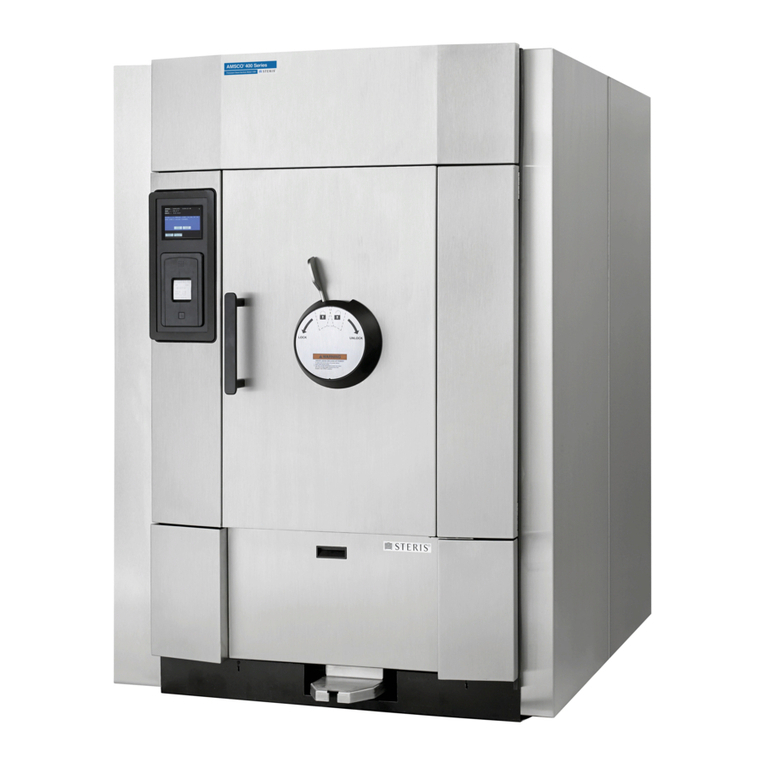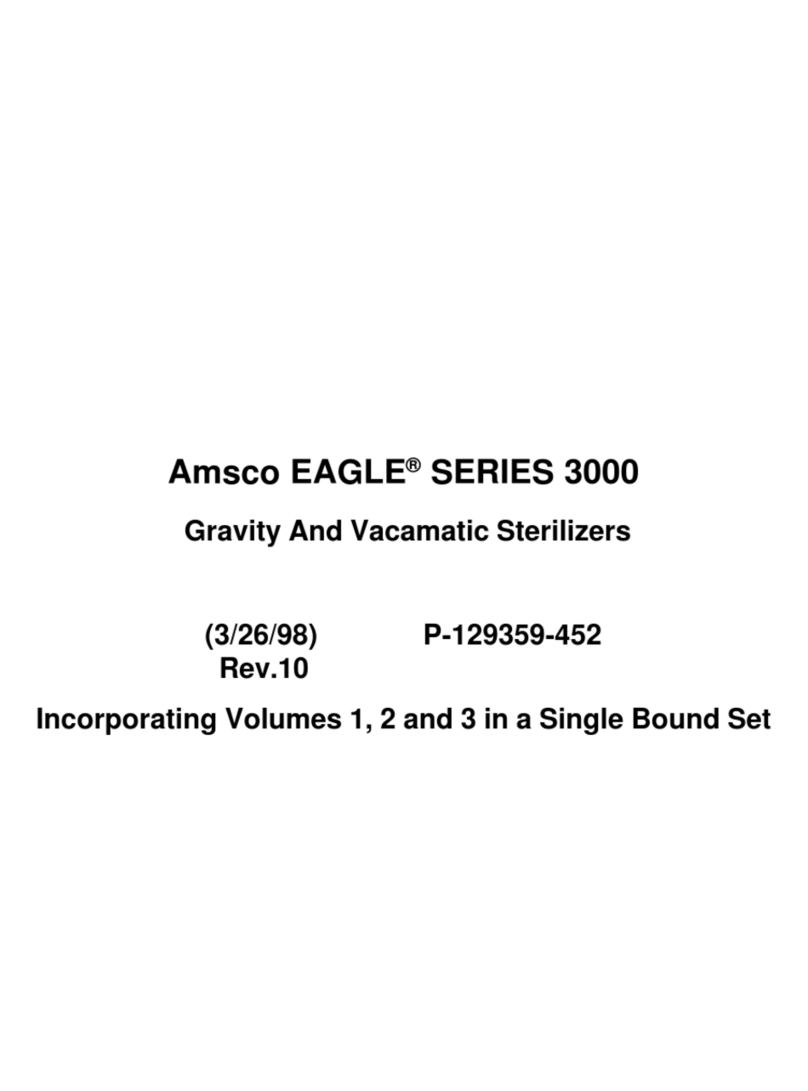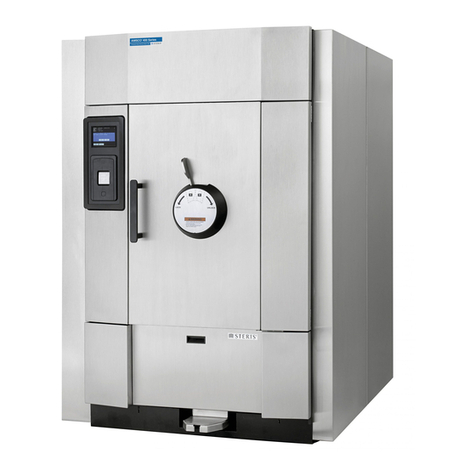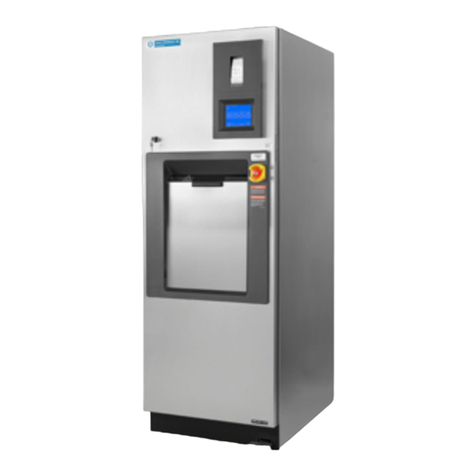
i
Table of Contents Operating Instructions 129373-496
A WORD FROM STERIS CORPORATION
A summary of the safety precautions to be observed when operating or
servicing this equipment can be found in Section 1 of this manual. Do not
operate or service the sterilizer until you have become familiar with this
information.
This sterilizer is not designed to process flammable liquids nor liquids in
containers that are not designed for sterilization. Any alteration of the sterilizer
which affects its operation will void the warranty and could violate state and
local regulations and jeopardize insurance coverage.
Advisory
This manual contains important information on proper use of the Amsco®
CenturyTM Medium Steam Sterilizer 26" X 37.5". Allpersonnelinvolvedinthe
use of this equipment must carefully review and comply with the
warnings, cautions, and instructions contained in this manual. These
instructions are important to protect the health and safety of personnel
operating an Amsco Century Medium Steam Sterilizer and should be retained
in a conveniently accessible area for quick reference.
This sterilizer is specifically designed to process goods using only the cycles
as specified in this manual. If there is any doubt about a specific material or
product, contact the manufacturer of the product for the recommended
sterilization technique.
STERIS carries a complete line of accessories for use with this sterilizer to
simplify, organize, and assure sterility of the sterilization process. Instrument
trays and biological/chemical monitoring systems are all available to fulfill
your facility's processing needs. A STERIS representative will gladly review
these with you.
A thorough preventive maintenance program is essential to safe and proper
sterilizer operation. Comprehensive instructions for routine preventive main-
tenance can be found in
Maintenance Manual, P-764330-117
, available
separately.
You are encouraged to contact STERIS concerning our Preventive Mainte-
nance Agreement. Under the terms of this agreement, preventive mainte-
nance, adjustments, and replacement of worn parts are done on a scheduled
basis to assure equipment performance at peak capability and to help avoid
untimely or costly interruptions. STERIS maintains a nationwide staff of well-
equipped, factory-trained technicians to provide this service, as well as
expert repair services. Please contact your STERIS representative for details.
Service Information
The Amsco Century Medium Steam Sterilizer is designed for efficient steriliza-
tion of non-porous and porous, heat and moisture-stabile materials. The
Amsco Century Medium Steam Sterilizer is available in the following configu-
rations:
26" x 37.5" x 36" (660 x 953 x 914 mm) Single Door Prevacuum
26" x 37.5" x 48" (660 x 953 x 1219 mm) Single Door Prevacuum
26" x 37.5" x 48" (660 x 953 x 1219 mm) Double Door Prevacuum
26" x 37.5" x 60" (660 x 953 x 1524 mm) Single Door Prevacuum
26" x 37.5" x 60" (660 x 953 x 1524 mm) Double Door Prevacuum
Indications for Use
© 2011 –STERIS Corporation. All rights reserved. Printed in U.S.A.





































